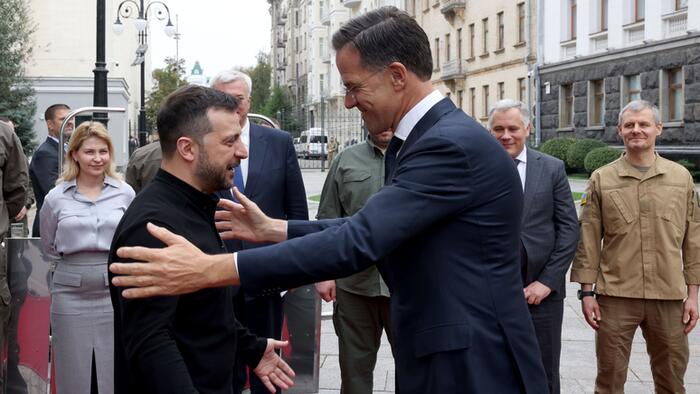Former Dutch Prime Minister Mark Rutte’s recent visit to Ukraine marks a significant moment for NATO as he assumes leadership of the alliance, succeeding Jens Stoltenberg. Rutte emphasized NATO’s unwavering commitment to supporting Ukraine amidst its ongoing conflict with Russia. He noted that this visit was his fifth since the Russian invasion began in February 2022, but his first as NATO Secretary General. Rutte articulated NATO’s continued prioritization of Ukraine’s struggles, indicating his intention to support its aspirations for closer ties and eventual membership within the alliance.
During his visit to Kyiv, Rutte reassured Ukrainian President Volodymyr Zelensky that the country is closer to joining NATO now than ever before, pledging to assist Ukraine on this path. However, this affirmation comes at a time when the situation on the ground appears increasingly dire, particularly in the eastern Donbas region, where Ukrainian forces face significant challenges. Reports indicate that Ukraine is losing control of key territories, including a recent withdrawal from the strategic town of Vuhledar, as Russian troops intensify their advances.
Ukrainian President Zelensky’s calls for enhanced military support from NATO include demands for long-range missile capabilities that could be used for strikes within Russian territory. This appeal raises concerns about escalating tensions, as such actions could lead to a direct confrontation between NATO and Russia, potentially resulting in nuclear escalation. Zelensky made a compelling argument for strengthening the frontlines and providing necessary military capabilities during a nightly address, underscoring the urgency in Ukraine’s plea for assistance.
Meanwhile, there have been mixed signals from the United States regarding support for long-range strikes. While initial indications suggested a potential approval for supplying such capabilities to Ukraine, a recent warning from Russian President Vladimir Putin prompted a reassessment of the situation. Putin’s statement, which framed the provision of long-range strikes as tantamount to a NATO declaration of war against Russia, led to alterations in Moscow’s nuclear strategy, intensifying fears of broader conflict.
As the conflict continues, Rutte’s visit to Ukraine serves to reaffirm NATO solidarity with Ukraine during a tumultuous time. His insistence on supporting Ukraine’s NATO membership aspirations aligns with the alliance’s strategic interests, but the escalating military situation complicates this goal. The situation remains fluid, with ongoing battles in strategic regions like the Donbas and Kursk, where Russian forces persistently push against Ukrainian defenses.
In conclusion, while NATO strives to demonstrate commitment to Ukraine through leadership visits and support pledges, the reality of the war presents significant challenges. The need for military aid is pressing, and decisions surrounding long-range capabilities are fraught with risk, as they could lead to direct NATO-Russia conflict. As Rutte begins his stewardship of NATO, the path forward will require careful navigation of military support, strategic military capabilities, and diplomatic relations, all set against the backdrop of a precarious and evolving war in Ukraine.

